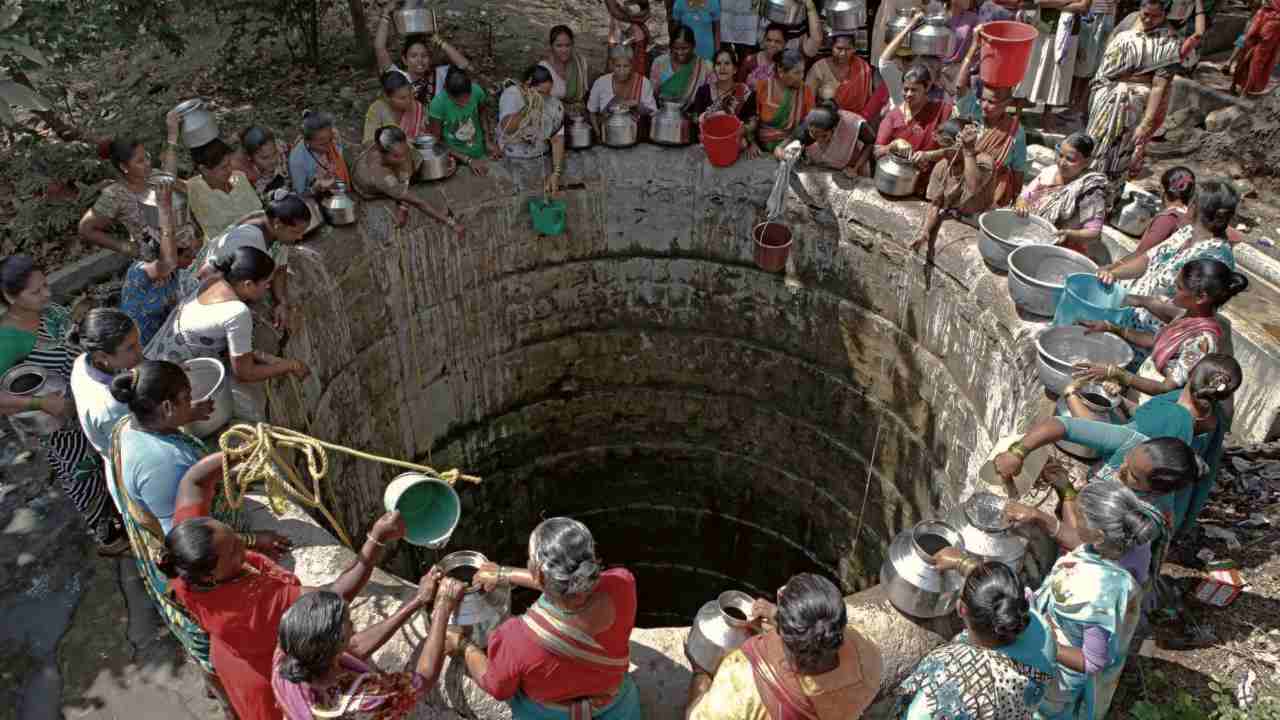
This post on the water crisis in India is part of the ongoing series where we are tracking the global water crisis.
In India, groundwater withdrawals have increased tenfold since the 1950s. Today 100 million people are in danger of the growing water crisis in the world’s second-largest nation. Twenty-one major Indian cities are set to run out of water next year.
In 2016 the New York Times editorial board noted how some 330 million people, one-quarter of India’s population, were suffering under the weight of a drought that was devastating the agricultural sector. Farmers were being forced from their lands. Power plants driven by water were being shut down. Armed guards were set up to guard dams and other waterways to prevent farmers from stealing water.
Only 17 percent of India’s farms have access to surface irrigation projects. Most of the farmers rely on rains or pump their water supply from underground. This has resulted in a significant drop to the water supply throughout India. The government reports that water supplies have dropped across the nation on average of 47 percent in the last decade.

Half of India’s national economy relies upon farming. Many farmers have been forced to sell portions of their lands and become indebted with their remaining lands in an effort to produce a harvest in this increasingly unwinnable situation. When these efforts and solutions fail, suicide is a frequent response. There were over 12,000 suicides by landowning and farmers and farm laborers in 2014, a slight increase over 2013. Many more who do not commit suicide in the face of their failed farming enterprise, abandon their efforts and move to the already overburdened cities of India in search of work, food, and resource for their families.
Tens of thousands of Indian farmers have made this trek in recent years, further exposing and worsening the problems of India’s untenable water supply issues in its cities.

Today, the Indian government is able to meet only 40% of the water demand in the southern state of Tamil. To confront dried up lakebeds and reservoirs, water tank trucks are moving into the state. These distribute free water to the poor, paid for by the government. Local citizens with means can purchase additional water.
Even where water supplies are adequate in India there are issues of pollution. According to the Water Project, over 21% of the nation’s diseases are water-related thanks to bio and chemical pollutants. Each year 200,000 Indian people die from unclean water-related issues.

In India, as with Iran, Jordan and other nations we have looked at in this series, climate change, and rising temperatures are only part of the story to the cause of this water crisis. The hand of man is very visible in the forms of corruption, mismanagement, and incompetence by the government. We are heading toward a major disaster in the story of the global water crisis in India – and it all could have been avoided.
Additional Reading: No Drips, No Drops: A City Of 10 Million Is Running Out Of Water
Read more about the global water crisis and its place as one of the core issues of this generation here.



